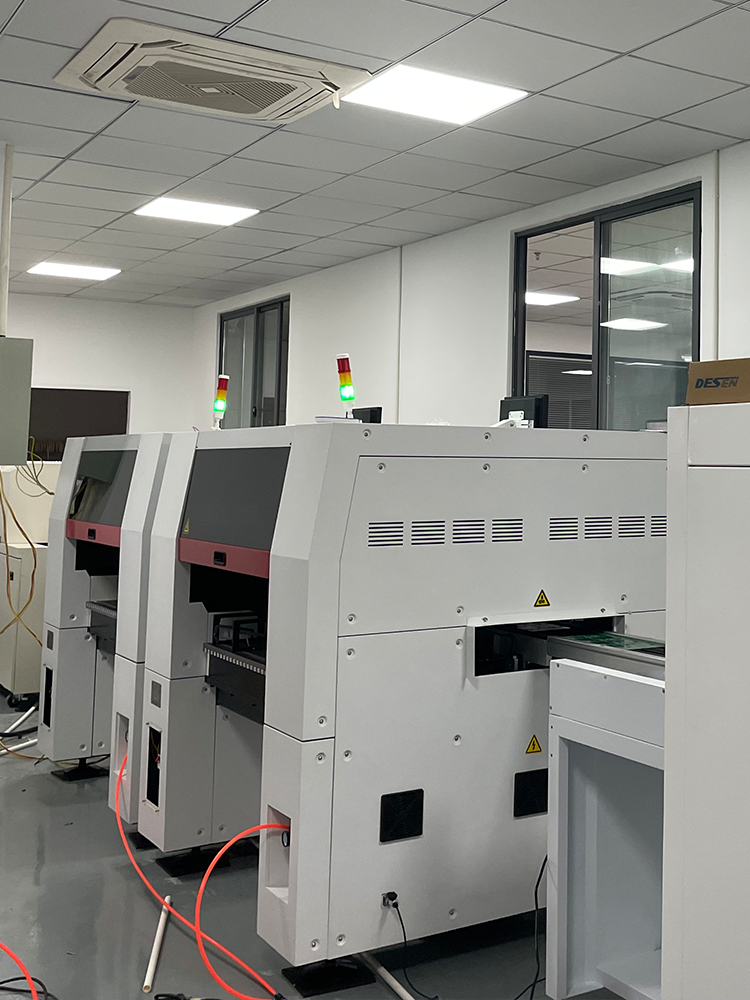Component Misalignment in Pick and Place Automation
Causes: Nozzle Wear and Vision System Errors
Component misalignment in pick and place automation can largely be attributed to nozzle wear and vision system errors. Nozzle wear occurs due to repetitive stress and the application of force during operations, which gradually reduces its pick accuracy. This decline in precision can significantly impact overall production efficiency by increasing the likelihood of improper placement and alignment of components. Regular monitoring and maintenance of nozzles are essential to detect wear early and minimize its detrimental effects.
Vision system errors are another common issue that can result in misalignment. These errors often stem from improper calibration or software glitches within the system. Factors such as inadequate lighting or low camera resolution exacerbate these errors, leading to difficulties in accurately identifying and positioning components during the pick process. Addressing vision system errors involves precise calibration and ensuring optimal environmental conditions to maintain system accuracy and reliability.
Solutions: Recalibrate Machine Vision and Replace Worn Nozzles
To counteract component misalignment in pick and place automation, recalibrating the machine vision system is a crucial step. This involves adjusting parameters such as focus, brightness, and contrast to enhance the system's ability to correctly identify and align components. Meeting industry standards and conducting regular calibration helps ensure the accuracy and efficiency of the vision system.
Additionally, replacing worn nozzles should be an integral part of the maintenance routine. Implementing scheduled replacements mitigates the risk of downtime due to nozzle failure, maintaining optimal pick and place machine performance. This proactive approach not only extends the life of the equipment but also sustains production quality by preventing the recurrence of alignment issues caused by worn-out components. Regular maintenance, therefore, plays a key role in safeguarding the efficiency of SMT equipment and automated pick and place machines.
Solder Bridging in SMT Equipment Operations
Why Stencil Alignment Matters
Proper stencil alignment is critical in SMT equipment operations, as it ensures accurate solder application and prevents solder bridging. Solder bridging can lead to electrical shorts and compromised circuit integrity, which may result in malfunctions and increased rework costs. Misalignment during the solder paste printing process can exacerbate these issues, causing significant defects. According to industry studies, misalignment-related defects can increase production costs by up to 20%, underscoring the importance of precise stencil management in maintaining operational efficiency and quality.
Fixing Reflow Profile Imbalances
Reflow profile imbalances can cause uneven heating and contribute to solder bridging troubles within SMT operations. Ensuring optimal solder joint formation requires close monitoring of temperature and time during the reflow process. Uneven heating can result in poor soldering, leading to defects and reduced component reliability. To mitigate these risks, employing thermal profiling tools is effective in achieving the desired reflow characteristics. Not only do these tools help monitor and adjust the reflow process, but they also reduce the likelihood of defects associated with improper soldering practices, enhancing overall production quality.
Tombstoning: The Manhattan Effect Explained
Thermal Imbalance in Automated Pick and Place Machines
Thermal imbalances in the soldering process can lead to a defect known as tombstoning, where one end of a component lifts off the pad. This occurs due to unequal heat distribution, causing one side to reflow faster than the other. Identifying and controlling these temperature distributions is vital to prevent tombstoning in automated pick and place operations. Research underscores the influence of solder paste volume and component size on the likelihood of this occurrence. Adjusting these design and process variables can significantly mitigate tombstoning risks. By addressing thermal imbalances, we ensure components are properly seated, maintaining the integrity of our circuits and reducing rework costs.
Preventative Measures: Pad Design and Thermal Profiling
Implementing preventative measures such as proper pad design is essential in reducing tombstoning risks. Effective pad design ensures even solder distribution and balances thermal forces during the soldering process. Additionally, robust thermal profiling is crucial in maintaining control over the soldering environment, ensuring uniform temperature across all components. By strategically adjusting the pad geometry and employing advanced thermal profiling techniques, tombstoning can be significantly reduced, leading to better assembly yield and enhanced product reliability. Keeping a vigilant eye on these aspects ensures smoother SMT operations and superior outcomes in PCB assembly.
Solder Balling in High-Speed Placement
Moisture Contamination Risks
Solder balling is a critical defect in high-speed placement that is often caused by moisture contamination during the reflow process. Moisture trapped in the solder paste can vaporize, creating solder balls that interfere with proper solder flow. This can lead to defective solder joints, resulting in circuit malfunctions. Studies indicate a staggering 40% defect rate in solder joints due to moisture contamination, emphasizing the importance of controlling humidity levels in processing areas. It's essential to implement effective moisture control strategies to minimize such defects and ensure reliable solder joints during high-speed SMT assembly.
Optimizing Solder Paste Storage and Application
Ensuring optimal storage conditions for solder paste is crucial to minimizing the risks of solder balling during high-speed placement. Proper temperature and humidity controls are vital in preserving the integrity of the solder paste, preventing the formation of solder balls. Applying the correct amount of solder paste is equally important, as excess paste can contribute to balling. Calibration and rigorous testing of application methods are imperative to ensure precise solder paste deposition. By maintaining stringent control over storage and application processes, we can significantly reduce solder defects and improve the quality and reliability of SMT assemblies.
Insufficient Solder Joints and Electrical Opens
Stencil Maintenance Best Practices
Proper stencil maintenance is crucial to avert issues related to insufficient solder joints during SMT assembly. Regular cleaning prevents stencils from becoming clogged or dirty, which can lead to improper solder application. Stencils that fail to carry an adequate amount of solder to the joints often result in electrical opens, disrupting circuit functionality. According to industry best practices, maintaining a scheduled maintenance routine is essential for ensuring consistent and high-quality results in solder applications. Implementing these practices not only aids in achieving defect-free outputs but also enhances the reliability of SMT processes.
PCB Warpage Correction Techniques
Correcting PCB warpage is vital in preventing electrical opens, which can hinder circuit performance. By employing techniques like thermal profiling adjustments and using fixtures to keep boards flat during soldering, warpage issues can be significantly reduced. Many industry experts advocate for using advanced inspection methods to detect warpage before assembly, thereby ensuring higher reliability in solder joints. These strategies help maintain the integrity of electrical connections, promoting efficient SMT assembly and minimizing defects that could lead to costly rework or failures.

